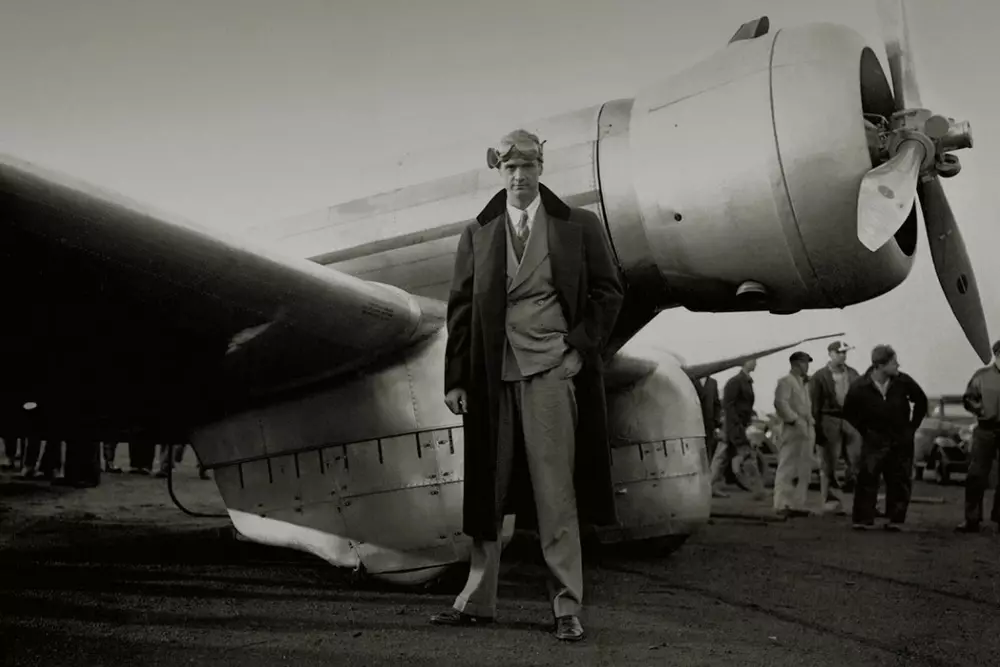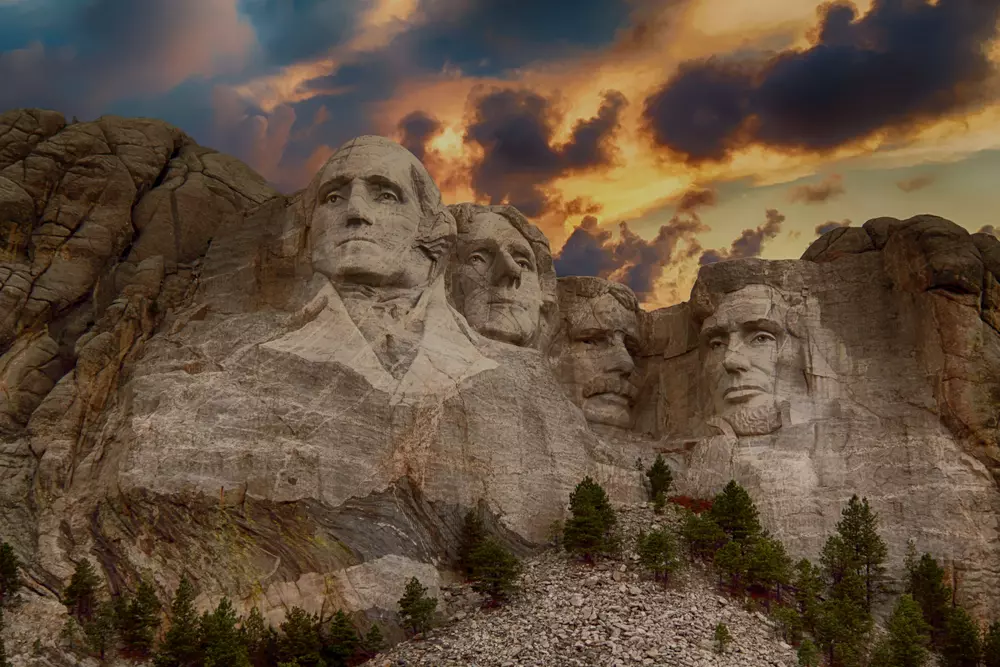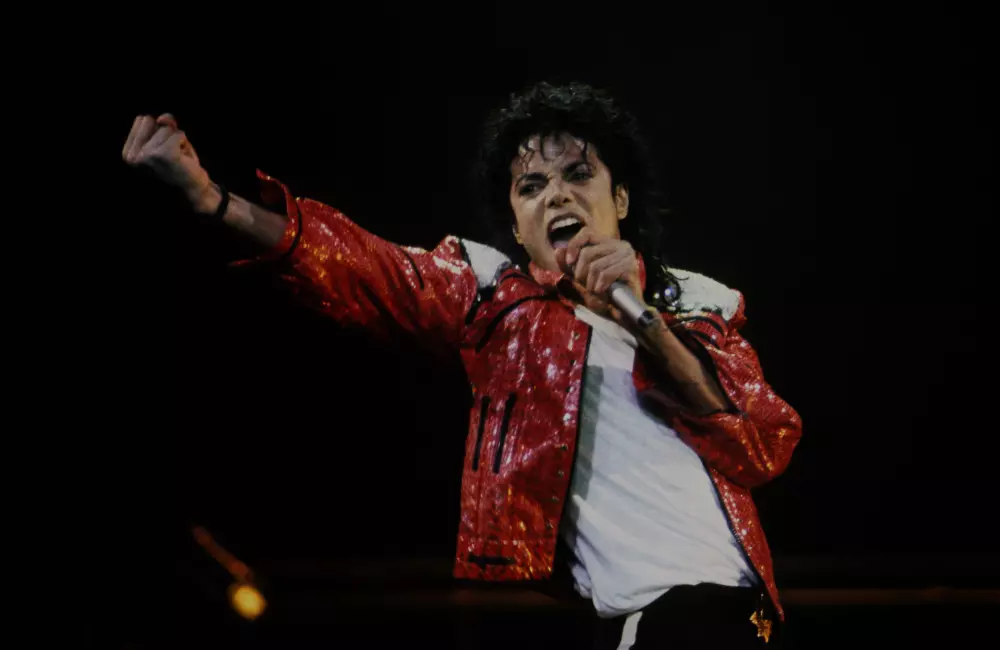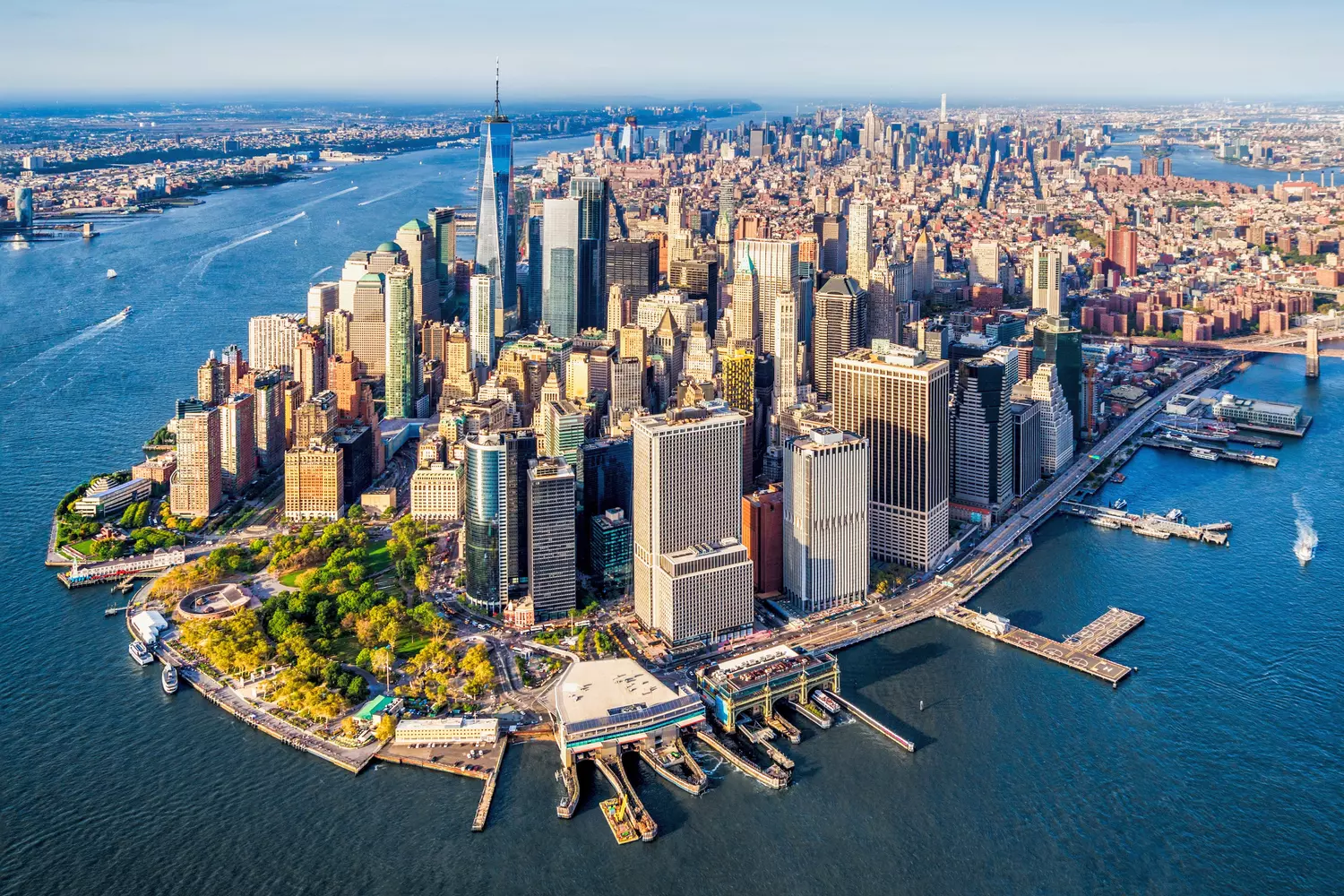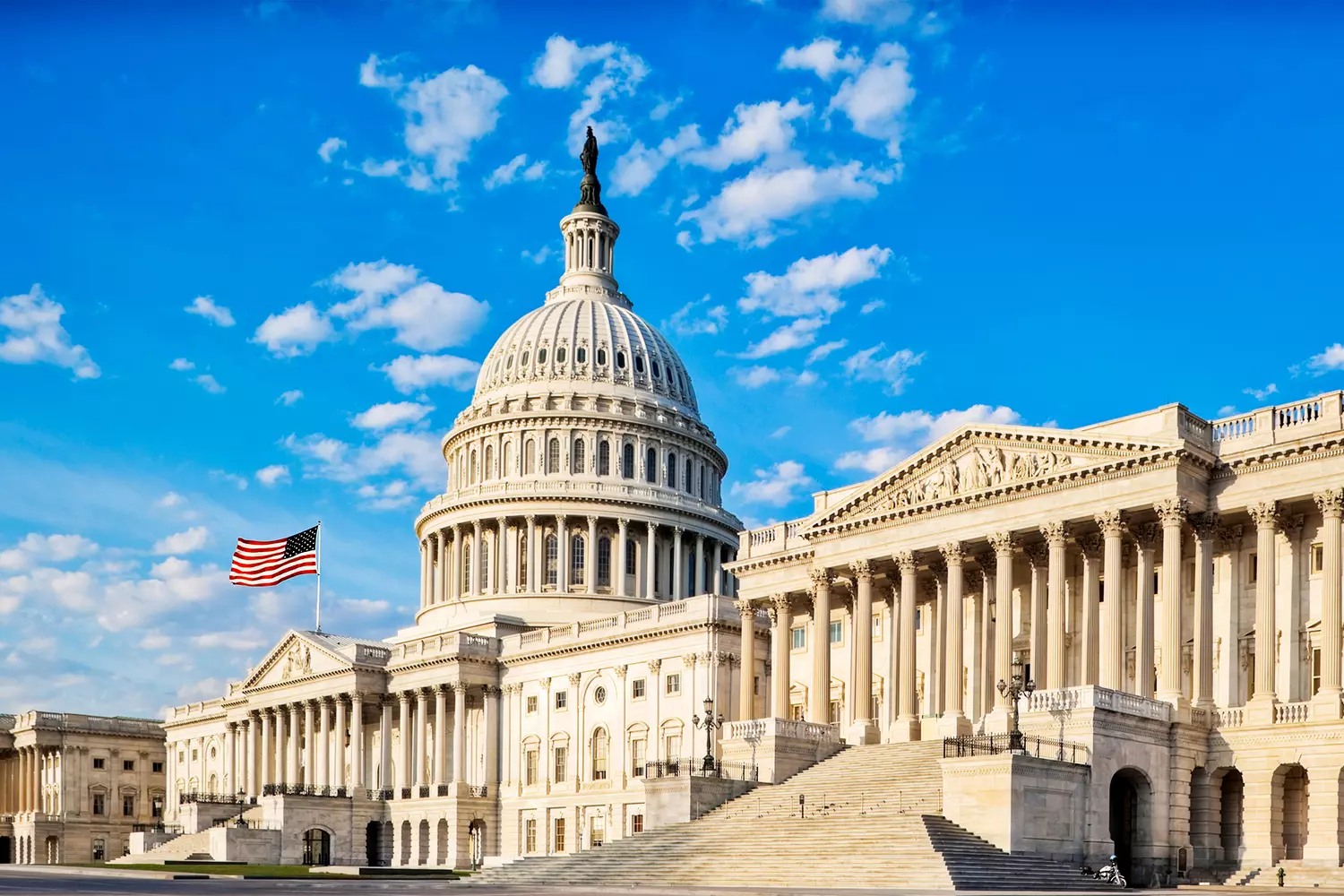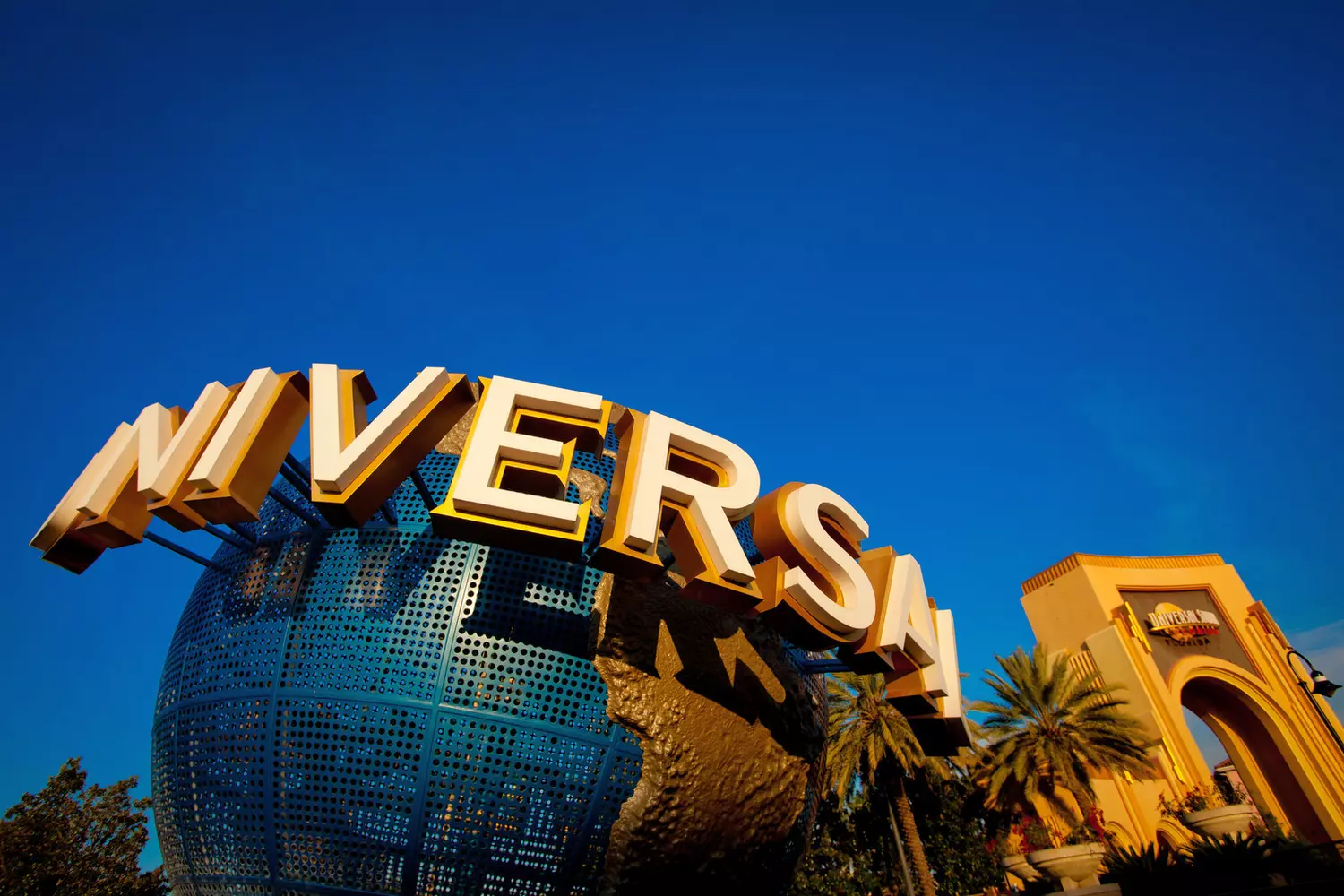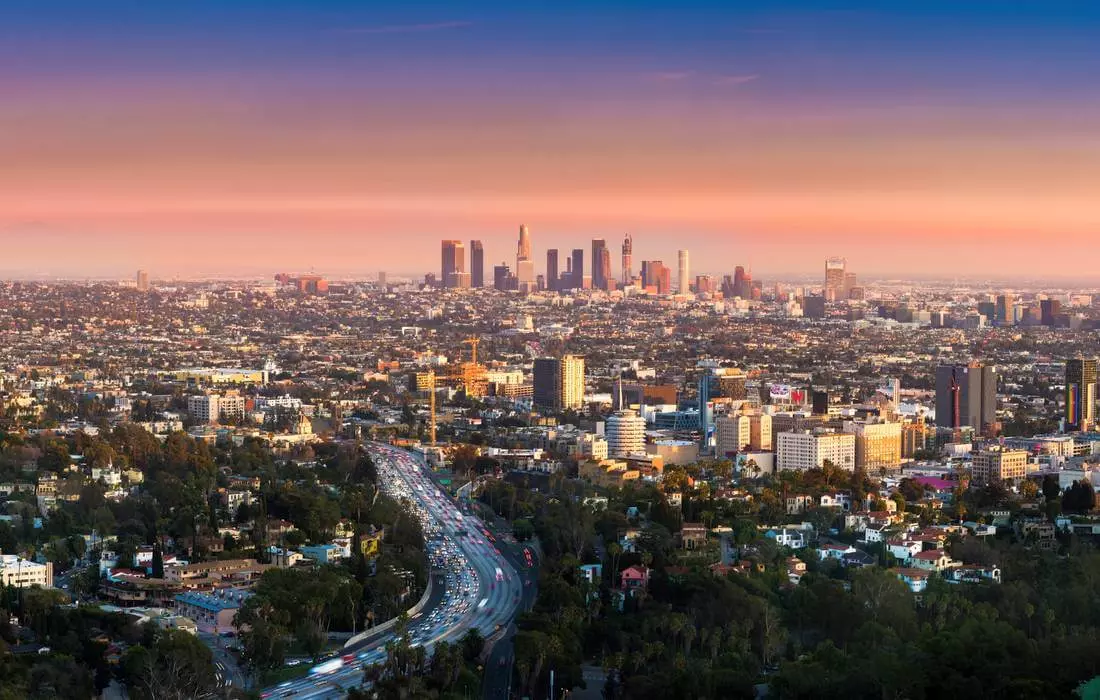Amid the rugged landscapes of South Dakota, where pine trees cling to the rocks and the wind seems to carry echoes of bygone times, rises one of the most recognizable monuments in the world — Mount Rushmore. This is not just a piece of granite with carved faces. It is a revelation. It is a visual manifesto of the American Dream, sculpted nearly two kilometers above sea level.
When you first stand before this rock, a strange feeling arises: as if the frozen stone faces are watching you — calmly, sternly, from the heights of centuries. They do not move, do not speak, but in their silence lies a whole story. The story of a nation built on the ideals of freedom, justice, and faith in endless possibilities.
Mount Rushmore is not only about the presidents. It’s about how every nation seeks a foundation within itself. About how a person can leave a mark not only in memory but also in stone. About how a symbol becomes a place of pilgrimage, inspiration, doubt, and pride.
People don’t come here just to take a photo with the rock as a backdrop. They come to see America in faces. To touch the granite and feel the weight of history. To perhaps ask themselves one of the most important questions: what will I leave behind?
If you haven’t yet been to Mount Rushmore — maybe you haven’t fully understood this country. Because here, amid the silence of the mountains and stone visages, lies something more than just a tourist route. Here is the heart of the nation.

In the 1930s, up to 400 workers were simultaneously employed in the construction of Mount Rushmore. Despite the height, use of explosives, and manual labor, not a single fatal accident was recorded.
The Faces That Built America: Why Mount Rushmore Is More Than Just a Sculpture
At first glance — just four heads carved into a rock. But if you look closer, Mount Rushmore transforms into something much deeper. It’s not just a monument. It’s a code encrypted in stone. A visual story of the most significant milestones in American history. And the faces on this rock were not chosen randomly — each of these presidents symbolizes not a specific era, but an entire idea.
- 01. George Washington — The Beginning
He was not just the first president. He was the one who laid the foundation. A symbol of courage and leadership, a man who relinquished absolute power for democracy. His face is the most prominent and dominant on the mountain, as if reminding us: “It all began here with principles, not power.” Washington embodies the birth of the nation, its emergence from struggle, revolution, and belief in the possibility of a free future. - 02. Thomas Jefferson — The Idea
Jefferson’s face on Rushmore speaks of ambition and horizons. He was not only the author of the Declaration of Independence but also the man through whom America doubled its size — it was under him that the Louisiana Purchase was made. His image symbolizes expansion, both literally and ideologically. Jefferson represents freedom, innovation, and the intellectual heritage that still defines the USA. - 03. Abraham Lincoln — The Conscience
His features are the sternest, as if carved by time itself. Lincoln is unity. He held the country together, led it through the bloody Civil War, and ended slavery. His presence on Mount Rushmore is a reminder of pain, sacrifice, and the necessity to stand for truth even when it seems impossible. - 04. Theodore Roosevelt — Moving Forward
Many wonder why Roosevelt, not, say, Franklin or Kennedy? It’s simple. Theodore Roosevelt stands for prosperity and power. He became a symbol of modernization, anti-monopoly efforts, and America’s geopolitical influence on the world stage. The Panama Canal, reforms, national parks, diplomacy — all of this is Roosevelt. His face seems to say: “America doesn’t stand still. It grows.”
Together, these four form not a chronological chain but a mosaic of meanings: from the birth of the country to its growth, overcoming crises, and confidence in the future. Mount Rushmore is not just about sculpture. It’s about what holds a nation together. And when you stand at its foot and look into these faces, it becomes clear: history has not gone away — it is here, in the granite, under the South Dakota sky.
Numbers That Impress: The Scale of Mount Rushmore in Detail
Sometimes dry numbers tell much more than pompous phrases. This is exactly the case with Mount Rushmore. Because behind every number here lies effort, precision, engineering daring, and an almost obsessive belief in the impossible. Mount Rushmore is not just a work of art but an architectural and engineering marvel measured in meters, tons, and millions of admiring gazes.
- 01. Height of the mountain — 1,745 meters above sea level
The monument is located on one of the high peaks of the Black Hills in South Dakota. And although the mountain itself is not the tallest in the region, its strategic position makes it visible from a great distance. It’s as if history is looking down on you, literally. - 02. Height of each head — about 18 meters
For comparison: that’s roughly the height of a six-story building. Just imagine — a face carved in granite so large that the eyes are almost two meters long, and the width of the mouth is about 5.5 meters. These proportions were calculated with exquisite precision to keep the faces realistic when viewed from below. - 03. Length of George Washington’s nose — 6 meters
The most famous nose in America is almost the length of two full-size cars parked bumper to bumper. Interestingly, it was carved perfectly the first time, without corrections — a true masterpiece by the sculptors. By the way, noses are one of the most challenging parts to carve in stone, especially at such a scale. - 04. Total weight of the sculptures — about 500,000 tons
Half a million tons. That’s how much granite was moved, blasted, and carved during the monument’s creation. Ninety percent of this work was done with dynamite — with jeweler-like precision. The rest — by hand. With hammer and chisel. Imagine how much time, sweat, and risk stood behind every square meter of rock. - 05. Over 2 million tourists per year
Even considering that South Dakota is not the most obvious tourist destination, Mount Rushmore attracts millions of visitors annually. Families with children, school groups, tourists from around the world, and even presidents come to see these stone faces. The most crowded time is on the U.S. Independence Day — July 4th — when light shows and festive events are held.
Mount Rushmore is math, art, and history combined. It is a place where dry numbers come alive and become part of a living heritage. When you look at these faces, know that behind every millimeter of carving lies a ton of effort, and behind every number — an era.

History in Granite: How the Faces on Mount Rushmore Were Born
Today, Mount Rushmore is an iconic symbol of America. But few stop to think about how incredible the idea itself was and how difficult its path to realization turned out to be. The story of this grand project is a story of daring, perseverance, and a dream carved in stone.
- 01. From Idea to Project: It Didn’t Start with Presidents
Interestingly, the original idea to carve something into the Black Hills was not that of a sculptor, but a historian and tourism promoter named Doane Robinson. He dreamed of drawing attention to South Dakota by creating figures of legendary Western heroes — Lewis and Clark, Wild Bill Hickok, and Chief Red Cloud. But the project needed scale and recognition.
In 1924, Robinson invited sculptor Gutzon Borglum — already a renowned artist whose reputation stretched from Washington to Europe. Borglum insisted on changing the concept: instead of cowboys and Native Americans, he proposed carving four presidents representing key milestones in the country’s history.
“If we want this to become America’s Eternal City, we need not frontier heroes, but the fathers of the nation,” Borglum insisted. - 02. 1927: The Beginning of Work
The official start of construction was on October 4, 1927, attended by President Calvin Coolidge. What followed were long years of dusty, hard, often dangerous work. Explosives, hammers, chisels, cables, scaffolding were used — and none of it guaranteed that anything coherent would emerge. Borglum literally “painted” with dynamite: he calculated exactly where to place charges so that unnecessary granite would blow off, leaving the correct volume.
More than 400 workers toiled on the cliff in harsh conditions, hanging over cliffs and battling the whims of nature. Yet they believed in the project so much that not a single worker died — remarkable given that safety was far from a priority at the time. - 03. Borglum — Not Just a Sculptor, But a Visionary
Gutzon Borglum was a complex man: charismatic, ambitious, sometimes dictatorially stubborn. He controlled every detail of the project, from the angle of Lincoln’s nose to the font of the memorial inscription. He had a grand vision: he wanted Mount Rushmore to become America’s answer to the pyramids, the Colosseum, and the Parthenon.
He even conceived a secret Hall of Archives — a chamber inside the rock behind Lincoln’s head where the nation’s most important documents would be stored: the Declaration of Independence, the Constitution, and the Bill of Rights. This chamber was partially carved out but never completed. - 04. History Intervened: The Project Was Never Completed
Borglum died in March 1941, just months before the project was officially halted. His son, Lincoln Borglum, tried to finish the work, but soon after, the United States entered World War II, and funding was cut. Instead of the originally planned monument with presidents’ torsos and arms, we only see their faces. Yet even those turned out more powerful than any bust.
Interesting fact: from the groundbreaking to the project’s completion took 14 years, during which more than 400,000 tons of granite were removed — almost entirely by hand.
Although Borglum never saw his creation completed, his vision came true. Mount Rushmore became not only a tourist icon but a symbol of permanence, courage, and American determination to see things through — even if the end doesn’t come on time.

Beyond Rushmore: Where Else to Go in the Black Hills and Nearby Areas
Visiting Mount Rushmore is just the beginning of a grand journey through South Dakota. This region is a true treasure trove of amazing natural and historical sites. If you spend a little more time than a standard tour, you’ll discover a different America — wild, philosophical, grand, and unexpectedly humane.
Here are some places worth visiting if you’re already at the foot of Rushmore:
- 01. Crazy Horse Memorial — the face of another people
Only 27 kilometers from Rushmore lies the Crazy Horse Memorial — the largest rock carving project in the world, still in progress. It is dedicated to the legendary leader of the Lakota people — a warrior who fought for the freedom and lands of his nation.
The monument was started in 1948 and continues to be built without government support — solely on private donations. When completed, it is planned to be several times larger than Rushmore. Crazy Horse’s face is already finished, and nearby there is a cultural center for Native peoples where you can learn the truth about the conquest of the American West. - 02. Custer State Park — American-style safari
This state park is like a slice of the African savanna right in the heart of America. More than 1,300 bison roam freely here, along with wild donkeys, deer, antelope, and even coyotes. You can drive along the famous Wildlife Loop Road — a winding road where wild animals cross right in front of your car.
The park is also famous for its picturesque lakes, hiking trails, rock formations, and scenic drives with tunnels barely wide enough for tourist jeeps. Don’t miss the Needles Highway — a winding road through towering granite spires. If you’re lucky, you’ll witness the famous “bison jam”, when a herd of hundreds blocks the road, turning the route into a living diorama of the Wild West. - 03. Wind Cave National Park — underground magic
Near Custer is one of the most mysterious parks in the USA — Wind Cave National Park. It hides one of the oldest and most extensive cave systems in the world, discovered in the late 19th century thanks to... a strange whistle of wind escaping from a crevice.
The cave is famous for its unique geological formation called boxwork (lattice structures resembling honeycombs), which are almost nowhere else to be found on Earth. Explored passages exceed 250 km — and that’s only a fraction.
Outside, the park is equally interesting: bison, deer, marmots, and coyotes live on the surface, and visitors can enjoy hiking trails through hills and prairies. - 04. Badlands National Park — a landscape from another planet
If you’ve ever dreamed of visiting Mars — this is the place. Badlands National Park is fossilized wastelands, sharp ridges, canyons, erosion peaks, and colors that take your breath away.
Here, red sandstone alternates with gray layers, and sunsets turn the landscape into a blazing painting. The park is especially popular with photographers and lovers of solitude.
You can drive along the Badlands Loop Road — a road with panoramic stops, hike the Notch Trail with ladders on the cliffs, or simply sit and watch the sunset, which here looks like the sky itself is on fire.

How to Make Your Trip to Mount Rushmore Perfect: Tips from Experienced Travelers
Mount Rushmore is not the kind of monument you can just “stop by quickly to see.” It’s a place where you want to pause, breathe in, take photos, listen to stories, and spend a moment alone with history. To ensure your experience isn’t spoiled by weather, organizational hiccups, or simple forgetfulness, here are some useful tips gathered from the experiences of real travelers and recommendations from our guides.
- 01. What to bring with you
- Sunglasses and a hat — summers in the Black Hills have bright sun, and without protection your eyes quickly tire, especially on open viewing platforms.
- A bottle of water — humidity is low, and the altitude makes the air dry. It’s better to drink small amounts regularly.
- Sunscreen — even on cloudy days, UV rays in the mountains are strong.
- Comfortable shoes — paths are paved but there are climbs, steps, and gravel sections.
- A camera or smartphone with a good camera — the photogenic nature of this place is off the charts.
- 02. Best times to come for photos
- Morning before 10:00 AM — soft diffused light, good visibility, few tourists. Washington’s face looks especially beautiful when the eastern sunlight hits it.
- Evening after 6:00 PM — warm sunset colors make the faces more volumetric and the sky dramatic. A perfect moment to shoot the monument against an orange sky.
- Night lighting show (May through September) — during summer, there is a daily ceremony with the lights being turned on and the flag lowered.
- 03. About the weather: don’t trust the sun in the sky
South Dakota is known for sharp temperature swings and sudden weather changes. It can be sunny and 25°C in the morning, and stormy or suddenly cold by noon. So:
- Be sure to check the weather forecast at least a day in advance.
- Bring a light windbreaker or raincoat — especially during transition months (May and September).
- In winter, snowfalls are possible and mountain roads may be slippery.
- 04. If you’re with kids: Junior Ranger Program
For families with children, there’s a wonderful free program — the Junior Ranger Program organized by the U.S. National Park Service. Kids receive a booklet with tasks, puzzles, and educational activities related to Mount Rushmore and U.S. history. After completing it, they can earn a Junior Ranger badge — a great souvenir and a source of pride. The program is designed for children aged 5 to 12 but is interesting for adults too! - 05. When to visit: the time of year matters
- The best time to visit is from May to September
Warm, dry weather, green hills, and blue skies make perfect scenery. All attractions operate: museums, cafes, souvenir shops, and tours. Events and evening shows take place.
July and August are peak tourist months. It’s crowded, especially on holidays, but the atmosphere is truly lively. - Winter: silence, snow, and philosophical solitude
The rocky faces are covered with frost, the air is fresh and clear, and tourists are rare — you can be alone with the monument. The downside: cafes, souvenir shops, and some infrastructure may be closed. You’ll need warm transport and suitable clothing.
The secret to a great trip lies in the details. And Mount Rushmore, despite its monumentality, reveals itself through small moments: how the light falls on Lincoln’s face, how children excitedly run around with Junior Ranger booklets, how local pies are served in cafes, and outside the window — the ever-calm pines of the Black Hills.
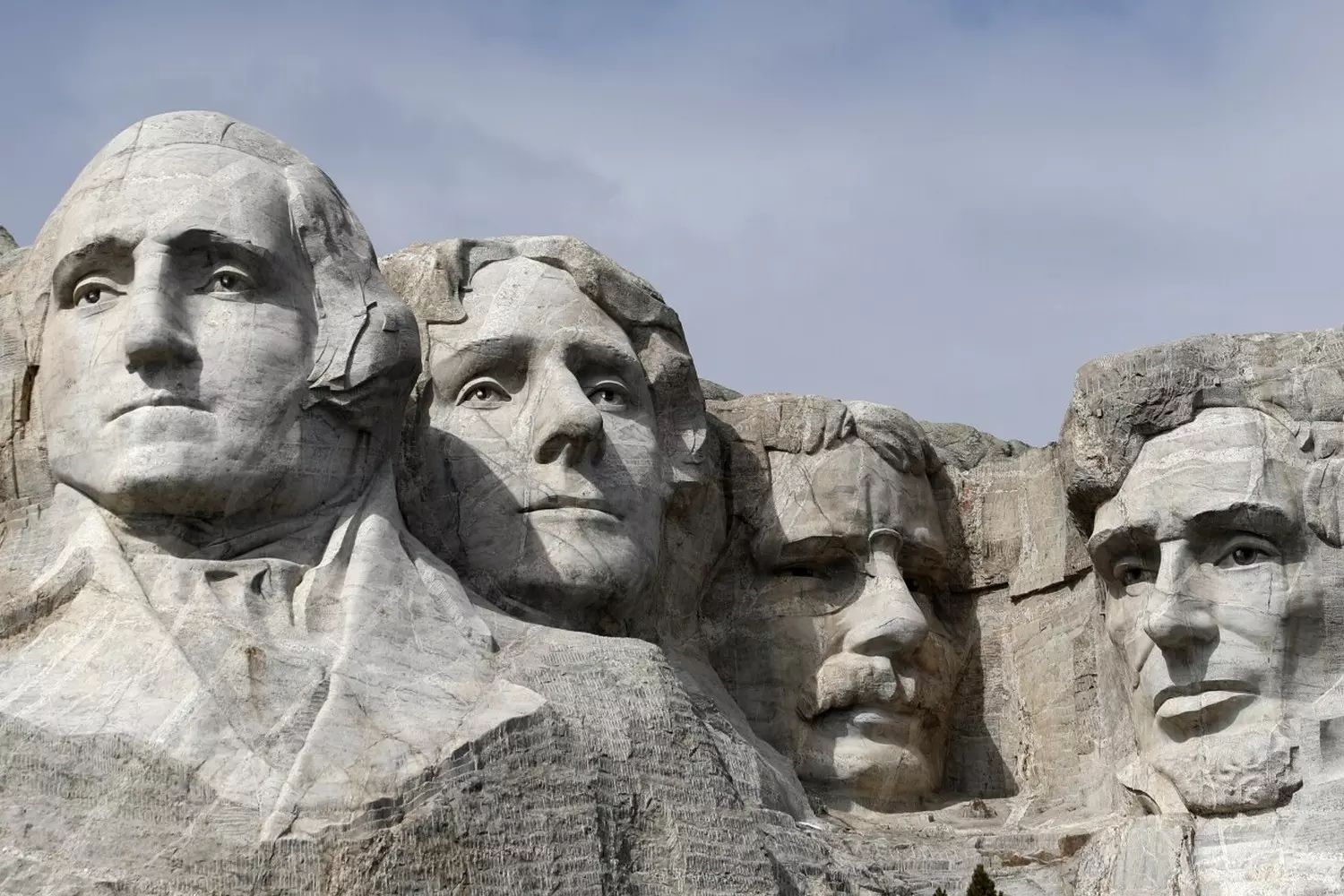
Mount Rushmore: A Symbol of Pride and a Challenge to Native Peoples — A View from Both Sides
When we look at the sunlit monument of Mount Rushmore, proudly towering over the Black Hills, it’s easy to forget that behind this granite masterpiece lies a complex and multifaceted history. For many Americans, this place is a symbol of national unity, freedom, and achievement. But for the indigenous tribes of the region, especially the Lakota people, Mount Rushmore is something much more contentious and painful.
- 01. The Black Hills — sacred land for indigenous peoples
For the Lakota and other Great Plains tribes, the Black Hills (called Paha Sapa in the Lakota language) have always been a sacred place. It is not just a landscape — it is a spiritual center, the homeland of their ancestors, and a site for rituals and ceremonies.
According to legends, the Black Hills are the heart of the world, where history, nature, and faith intertwine. Their ancestors hunted here, sought refuge, and received blessings from the spirits. Losing this land for the Lakota is equivalent to losing part of their identity. - 02. Colonization and treaty violations
Historically, the United States officially recognized the Lakota’s rights to the Black Hills in the 1868 treaty — a treaty that guaranteed the inviolability of these lands. However, in the late 19th century, when gold deposits were discovered in the region, the U.S. government broke its promises by declaring the land federal property and opening it up for mining and settlement.
This decision led to conflicts, loss of lands, and severe consequences for the indigenous people. - 03. Construction of Mount Rushmore — a controversial symbol
When work on the monument began in the 1920s–1930s, the chosen site was right in the Black Hills — the sacred territory of the Lakota. For many indigenous people, this was an act of ignorance and disregard for their culture.
To them, the carved faces of presidents symbolizing U.S. expansion and development were “carved” into land that belonged to their ancestors long before the United States was founded. This clash of symbols became a vivid example of historical inequality and misunderstanding. - 04. Modern response and the path to dialogue
Today Mount Rushmore remains a popular tourist attraction, but awareness of its complexities and contradictions is growing. In 1948, not far away, the Crazy Horse Memorial project was initiated — a monument dedicated to the great Lakota leader and the culture of indigenous peoples.
This project is not just a sculpture but also a cultural center, an educational complex, and a symbol of efforts to restore historical justice and respect.
Understanding the history of Mount Rushmore is not just a lesson in a school curriculum. It is a perspective on how the same land can hold very different meanings for different people. It is a reminder that symbols are multifaceted, and each of us carries the responsibility for respect and dialogue.
If you plan to visit Mount Rushmore, we recommend not limiting yourself to just admiring the granite faces. Learn about the history of the indigenous peoples, visit the Crazy Horse Memorial, and listen to the stories of local guides. Only this way can you truly grasp the depth and complexity of this remarkable place — and feel the spirit of true America in all its diversity.
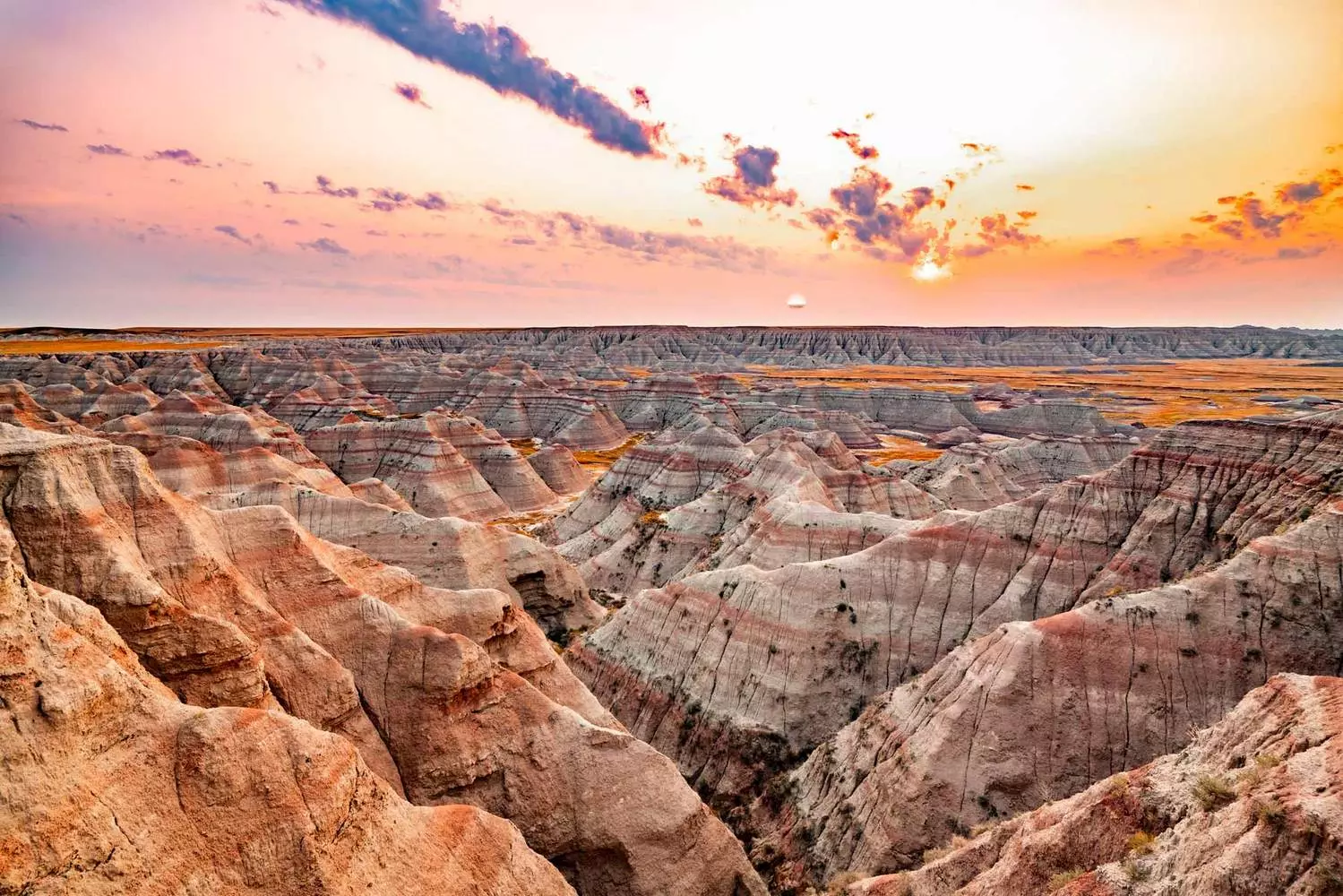
Mount Rushmore — A Stone Symbol of Inspiration and America's Cultural Code
Mount Rushmore is not just a giant granite monument carved into the landscape of South Dakota. It is a living symbol that has inspired millions of people around the world for nearly a century. It stands as an allegory of great American history, a reflection of the nation’s spirit, and an eternal source of creative inspiration for artists, writers, and filmmakers.
Mount Rushmore is somewhat like the “American Parthenon.” It embodies the values on which the country was built: freedom, courage, equality, and the pursuit of a better future. The gaze of the presidents carved into the granite looks into eternity — inspiring everyone who understands the power of historical continuity.
Through it, America tells its story to the world and to itself — through the scale and strength of stone, across generations.
For many visitors, Mount Rushmore is more than just a place; it is an emotional experience. Here, one feels a connection to the past and senses the importance of every decision and deed that shaped the nation. For some, it is a moment to reflect on their roots and goals; for others, an example of perseverance and strength of spirit.
Mount Rushmore is not only a granite monument but also a powerful cultural symbol that has inspired creators across various art forms for decades. In cinema, literature, and visual arts, it becomes a reflection of American history, national identity, and the complex emotions tied to the country’s legacy. Below is a selection of the most striking examples of how Mount Rushmore appears in popular culture and art.
- 01. Films featuring Mount Rushmore
- National Treasure (2004)
An exciting adventure film where Mount Rushmore is part of a mysterious quest linked to the history of the USA and great American symbols. - Once Upon a Time in America (1984)
In several scenes, Mount Rushmore is used as a symbol of the American Dream and the country’s contradictions. - The Simpsons Movie (2007)
The animated film includes a parody scene featuring Mount Rushmore, highlighting its recognizability in popular culture. - The Wizard of Oz (1939)
This iconic movie mentions Mount Rushmore as part of the symbolism of the American landscape, though it is not shown directly.
- 02. Books and literature
- Mount Rushmore by Theodore Roosevelt
A collection of speeches and essays by the 26th U.S. president, in which he mentions the symbolism and significance of the monument. - American Monumentality — a collection of essays on U.S. architecture and symbols
Includes detailed analysis of Mount Rushmore as a cultural phenomenon. - The Black Hills and Their Secrets by James Wrightman
A historical book unveiling myths and facts about the region and the monument’s significance. - Poetry collections dedicated to America and its symbols
Many 20th-century poets used the image of Mount Rushmore to express their thoughts on national identity.
- 03. Artworks and installations
- Graffiti and street art
The image of Mount Rushmore often appears in street art as a symbol of struggle, protest, and patriotism simultaneously. - Contemporary art installations
Some modern artists use projections onto the mountain or create interpretations of the monument in their exhibitions, raising questions of history and memory. - Photographic series
Photographers produce works showing the monument in different seasons and from unusual angles, conveying its multifaceted nature.
Mount Rushmore is more than just a monument. It is a living legend that can be seen, felt, and drawn inspiration from. No matter who you are — artist, writer, traveler, or simply someone searching for meaning — it will surely leave a mark in your heart.
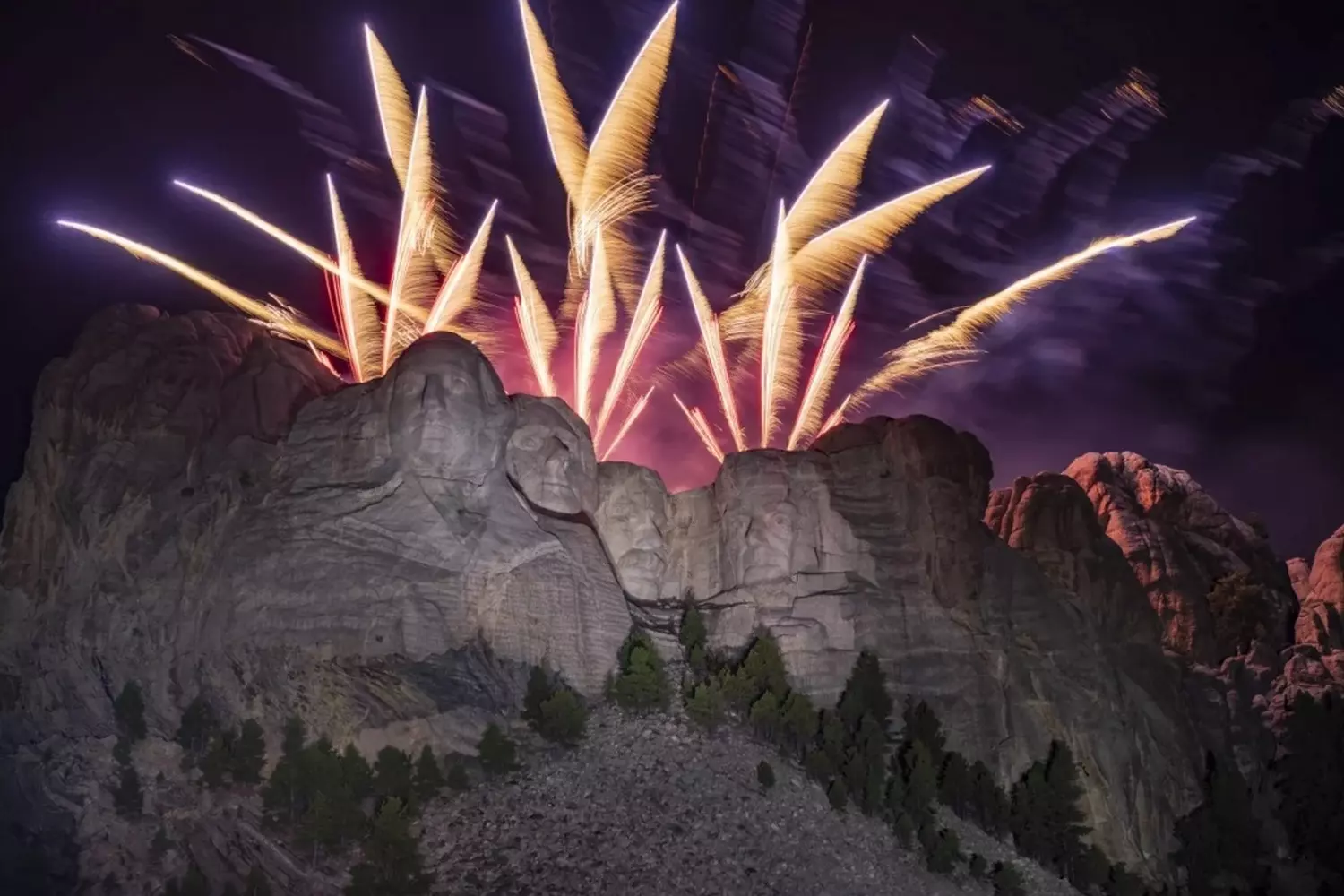
Mount Rushmore: 15 Amazing Facts About the Stone Presidents
Mount Rushmore is one of the most recognizable symbols of the United States, where the faces of four great presidents are forever carved in granite. But behind this monument lies a wealth of little-known details: from daring engineering feats to controversial historical moments. How was this masterpiece created? Why did Jefferson have to be "relocated"? And what secrets lie beneath the mountain? Here are the most surprising facts about the legendary memorial.
- 01. Jefferson was carved twice
The first attempt to sculpt Thomas Jefferson to the right of Washington failed due to cracks found in the rock. They had to blow up the nearly finished head and start over — now Jefferson "looks" from the left. - 02. Roosevelt was "hidden" because of a mistake
Theodore Roosevelt’s head is set deeper than the others — the builders overdid the blast and removed an extra layer of granite. Also, including him sparked controversy: Borglum insisted because of his personal acquaintance with the president. - 03. The mountain is named after a random person
Charles Rushmore was a New York lawyer who in 1885 asked locals the mountain’s name. They joked, "Name it after you." The joke became reality, and Rushmore later donated $5,000 toward the memorial’s creation. - 04. “Makeup” for the presidents
Every 10 years specialists climb the monument to fill cracks with epoxy resin. In 2005, they used 1.2 tons of special sealant. - 05. The invisible mountain
During World War II, the memorial was covered with tarps so Japanese bombers couldn’t use it as a landmark. - 06. A space landmark
The Apollo 11 astronauts studied Rushmore before their moon flight as an example of a well-visible object from a great distance. - 07. Eyes that were supposed to glow
Gutzon Borglum dreamed of installing lighting inside the presidents’ eye sockets so they would “look” at visitors at night. The project was abandoned due to cost — considered “extravagant” in the 1930s. - 08. A granite autograph for the ages
One worker, Louis Jubileus, secretly carved his initials “L.P.” under Lincoln’s chin. The inscription was noticed only 20 years later but was left intact — now it’s part of the history. - 09. Invisible presidents
On clear nights, silhouettes of the four presidents are projected onto clouds with powerful spotlights. The effect was so impressive it was used in the 1940s for anti-Nazi propaganda. - 10. Dinosaurs vs. presidents
During construction, fossils aged 1.6 billion years were found inside the granite. Paleontologists begged to halt work, but Borglum declared: “America needs heroes, not ancient lizards.” - 11. Roosevelt’s cursed head
Over 80 years, lightning struck Theodore Roosevelt’s statue 7 times. Workers joked it was “revenge” for being the last face carved. In 2004, the monolith had to be reinforced with steel pins. - 12. The strangest souvenir
In the 1950s, an entrepreneur sold tourists “real pieces of Rushmore” — which were actually granite from a nearby quarry. When the scam was uncovered, he had already earned $250,000 (about $2.5 million today). - 13. Underground bunker
In 1952, a secret nuclear war shelter was built beneath Lincoln. Declassified CIA documents confirm it stored vaccine samples and... 10 tons of gold. - 14. The workers’ curse
Out of 400 builders, 127 died of silicosis within 10 years after completion. Their families still demand compensation. - 15. The secret inscription
Laser scanning in 2016 revealed a carved phrase: “We are not slaves” — likely left by Irish immigrant workers in 1934.
Mount Rushmore is not just a tourist attraction, but a symbol of ambition, controversy, and engineering genius. From Native American legends to Hollywood scenes, its story continues to gain new layers — like granite under the sculptor’s chisel.
Mount Rushmore keeps surprising: whether because of its scale or its many hidden stories. Who knows what secrets will be revealed when they start carving the next presidential nose?
P.S. In 2020, activists proposed adding Barack Obama’s head to the monument. The idea was rejected, but the debates continue...
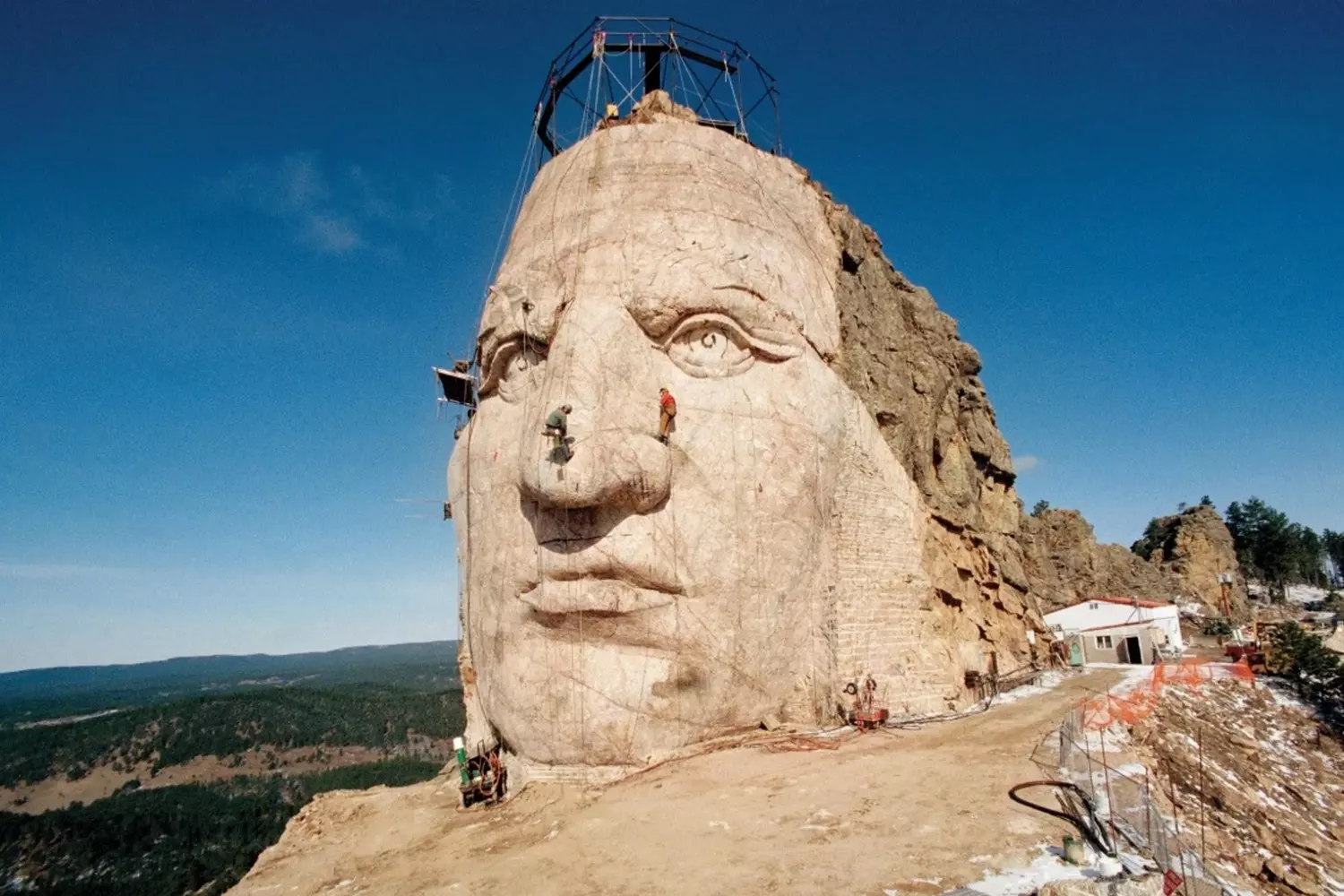
See America in Faces with American Butler
Mount Rushmore is one of those rare places where nature and human hands have come together to create something truly magnificent. It’s a place where the silence of granite speaks louder than words. A spot on the map where you can feel that you’ve touched history.
If you want to experience Rushmore not just as a tourist, but as a participant in a grand American journey — turn to American Butler. We’ll arrange your itinerary, transfer services, a professional guide, and unforgettable emotions.














